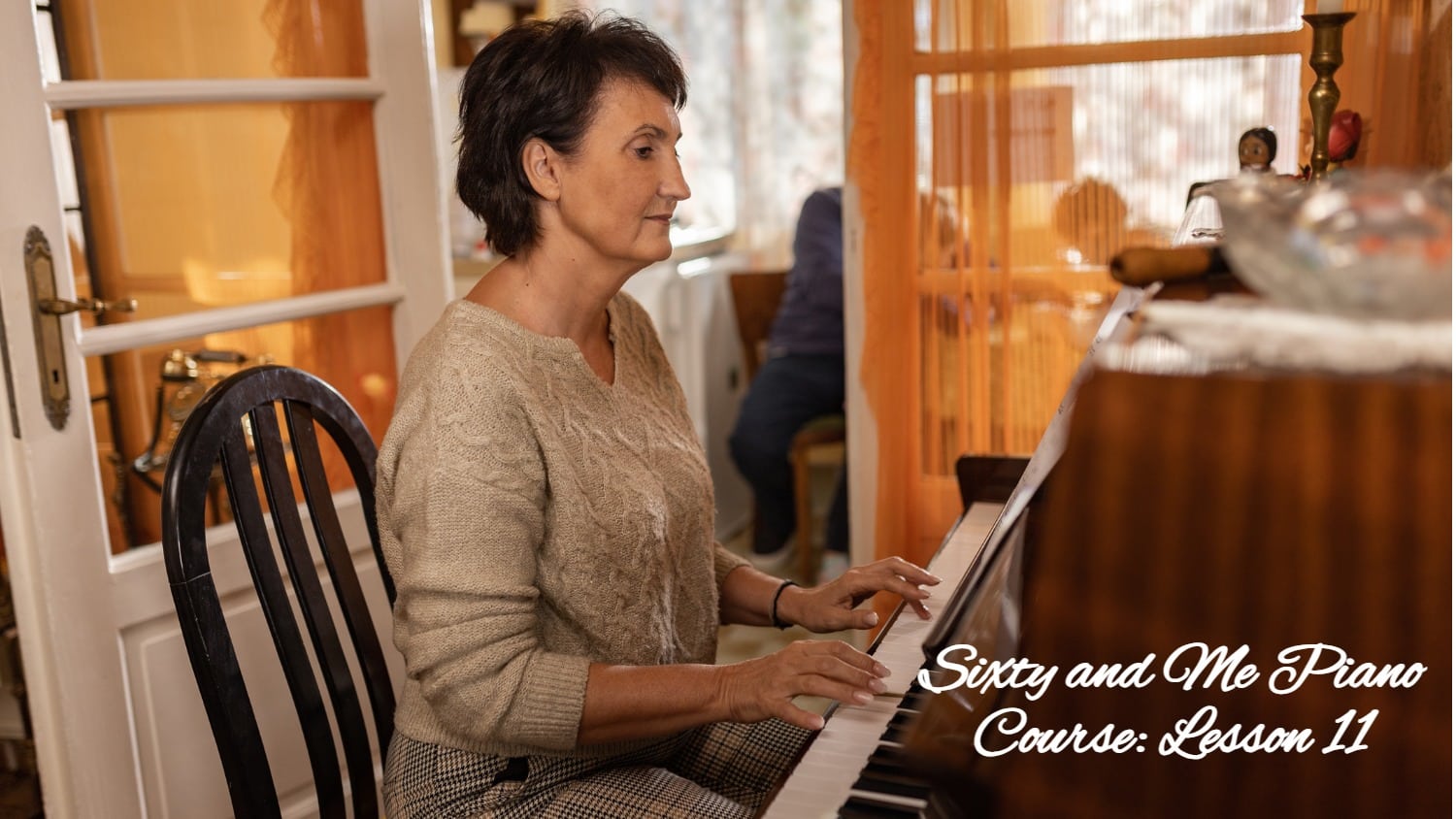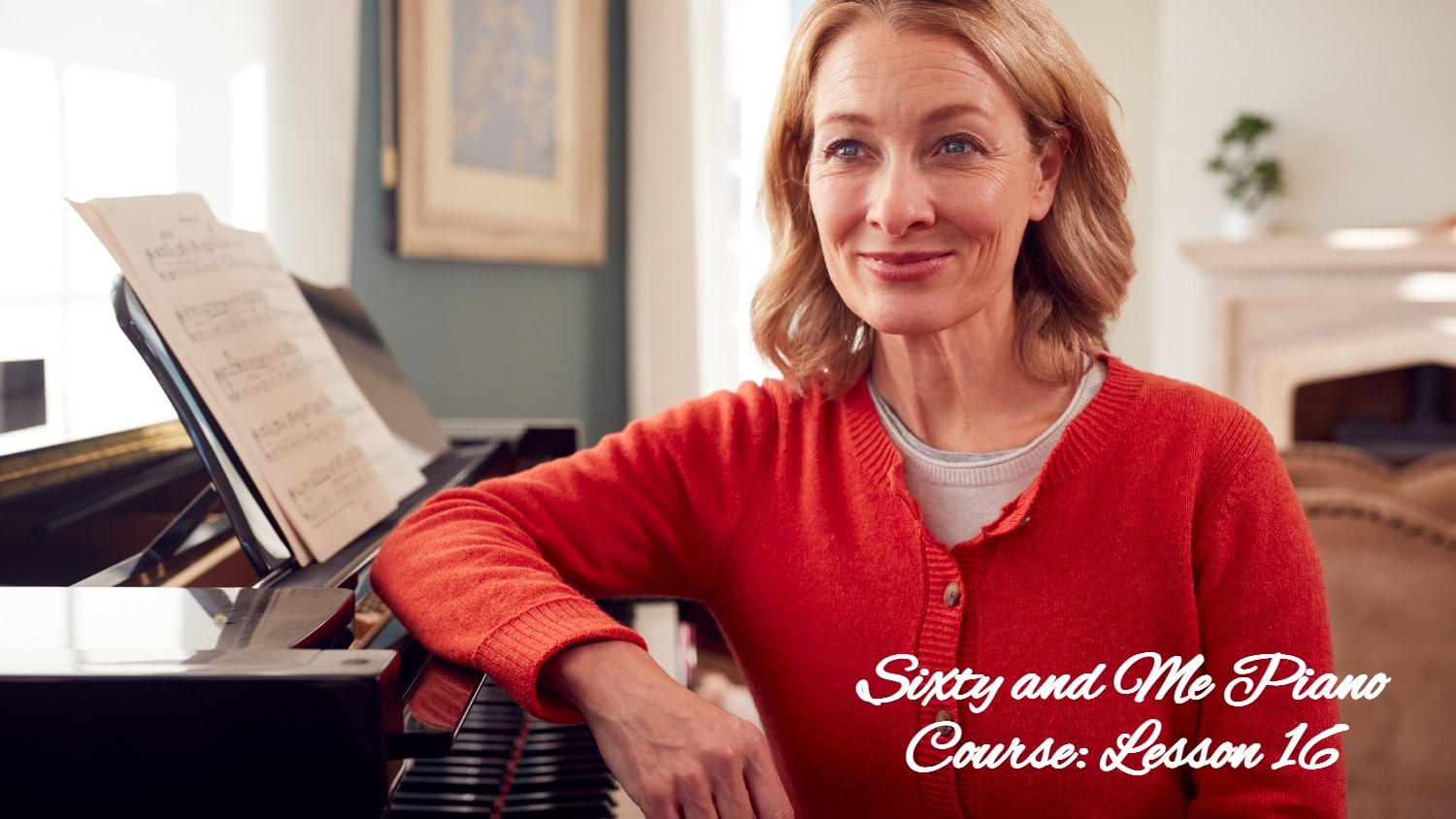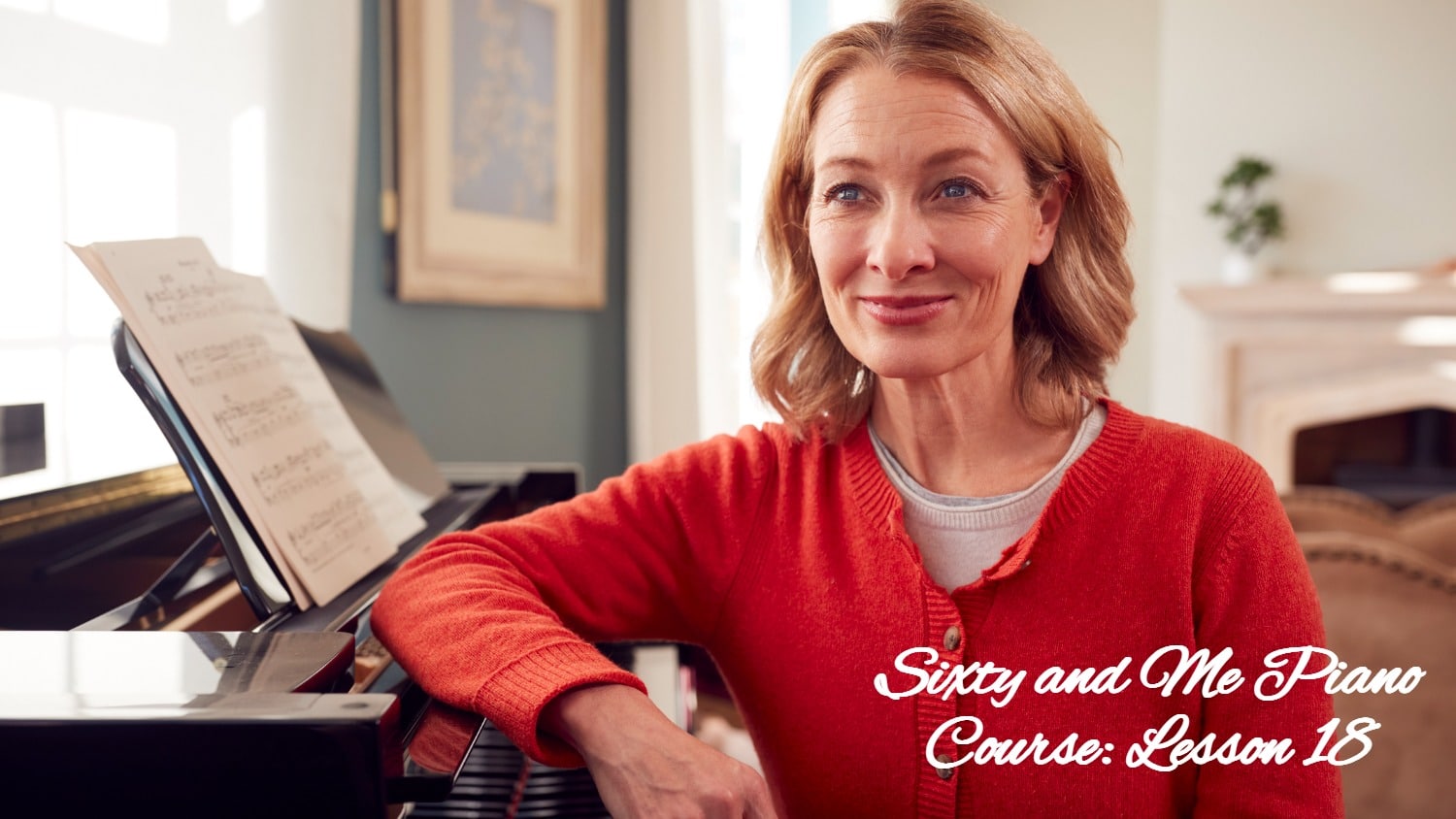
Piano Lesson 11: CHORDS, CHORDS, CHORDS!
[NOTE: If you are just joining us for the first time, you can find my previous Sixty and Me Free Piano Lessons on my Author page. You can join our lessons any time!]
Many of you report to me that you are taking your lessons more slowly than I am posting them, and that is great, and completely expected! There is no set timeline for your learning as long as you are able to maintain consistent practice. Try to get to your keyboard at least 3-4 days per week in order to keep progressing.
Start each new lesson when you feel you are playing your current pieces fairly smoothly. All of my Sixty and Me lessons will remain posted on my Author page which you can access at any time.
If you haven’t already, read MORE ABOUT CHORDS on Appendix p.iv at the back of the book. There are 4 basic chords you will be learning about in our book Upper Hands Piano, BOOK 1: MAJOR, MINOR, DIMINISHED and AUGMENTED. I discuss these chords and CHORD SYMBOLS in my video:
11.1 MAJOR, MINOR, DIMINISHED and AUGMENTED chords, and Chord Symbols
11.2 Exercise #3
Exercise #3 is great for developing dexterous, agile fingers. We will be playing this exercise in all 12 keys. Use the PENTASCALES chart at the back of your book if you are not sure of the 5 notes for each Pentascale.
Play the first two measures of Exercise #3, three times. Two times forte (loudly) and one time piano (softly). Then play the chords: MAJOR, MINOR, DIMINISHED and back to MAJOR. Play each exercise with each hand, separately. Here is my demonstration video for Exercise #3 in C and G:
11.3 Chord Calisthenics
The chord calisthenics are here to help you to review and start to memorize your triads (three-note chords). In Chord Calisthenics #1 we play the chords “broken” (one note at a time) as well as “block” (all together).
Notice that there are chord symbols above the block chords. The chord symbols are like a shortcut, telling pianists and guitarists (and other instrumentalists) what chord to play, without having to read the bass notes. For the next 2 weeks play the Chord Calisthenics in C, G, D and A (the first 2 lines).
11.4 Aviemore Bells, p.41
Try playing Aviemore Bells with each hand separately before putting your hands together. Notice that in the first and third lines, the melody is played with the left hand in the bass staff, and the right hand plays chords. In the second and fourth lines the right hand plays the melody in the treble staff, while the left hand plays chord accompaniments. Very tricky! But a great challenge for you for the next two weeks.
While you play Aviemore Bells, notice the new bass note on p.42! You will soon be playing bass D in the following pages, but for now, keep reminding yourself that Dessert D is on the middle line of the bass staff.
Passion Practice!
- Exercise #3 in C AND G. Play each exercise 3 times: 2x Forte (loudly) then 1x Piano (softly) with each hand. Use the PENTASCALES chart at the back of the book if you are not sure of the hand positions for C and G.
- Chord Calisthenics #1 – first 2 lines with each hand separately (in C, G, D, and A).
- Aviemore Bells, p.41.
- Review p.29-30 and The Irish Washerwoman if you have time.
Let’s Have a Conversation:
Do you have a favorite chord? I am partial to minor chords myself. That’s probably because my parents listened to a lot of Middle Eastern music while I was growing up. Most Middle Eastern music is based on minor chords, and I got used to that dark sound. What music was playing in your house growing up? Do you like the music your parents listened to or did your tastes diverge from theirs?
Tags Piano Lessons







Hi Gaili
I am a 66 years old women and I always wanted to learn an instrument. I am a real beginner. I like your approach. I like that your program is base on brain research and focuses on a mature clientele. My keyboard and the first book is ordered.
Thank you very much for inspiring me. I would also like to stay in touch.
Claire
That’s wonderful Claire! Thanks for ordering my book and a keyboard. Go at your own pace and try to play the piano at least 4 days per week for 10 minutes to make steady progress. I hope you enjoy the lessons and please do stay in touch! Good luck 🎶🎹🎶
What a fantastic service you are providing, Gaili and 60+Me! You’re a great teacher, Gaili, and I’m excited to discover your program at this particular juncture. I’ve been a professional cabaret singer for decades, with a basic knowledge of music, but limited in my sight-singing keyboard harmony skills. As I branch out into arranging for my vocal trio, and pick up more liturgical singing gigs, I’ve been looking for a teacher like you. Thank you for your generosity of spirit! I’d like to stay in touch. 💖 Pam (https://theboomerbabes.com)
Thanks so much Pam! I visited your website- wow your voice is just gorgeous and so versatile. I’m so glad you are expanding your music skills- being able to arrange charts for other singers and your musicians gives you so much freedom. “…Age that is scariest…🎶” 😂😂😂 Absolutely do stay in touch!